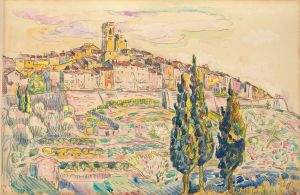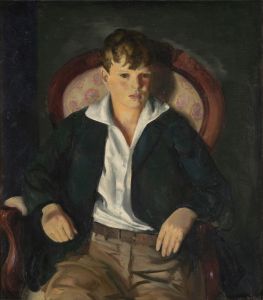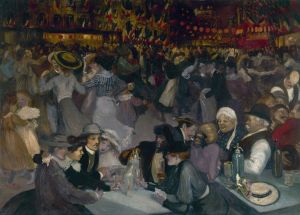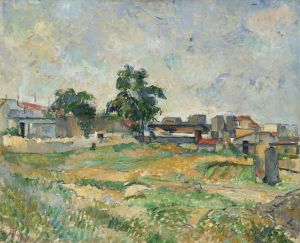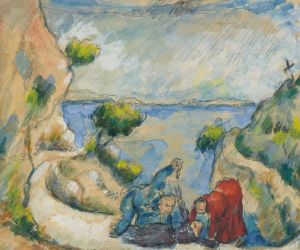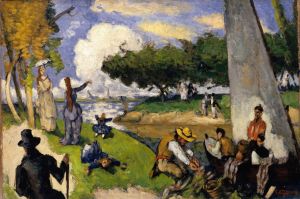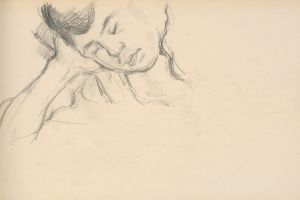
The Artist’s Son,Paul
A hand-painted replica of Paul Cézanne’s masterpiece The Artist’s Son,Paul, meticulously crafted by professional artists to capture the true essence of the original. Each piece is created with museum-quality canvas and rare mineral pigments, carefully painted by experienced artists with delicate brushstrokes and rich, layered colors to perfectly recreate the texture of the original artwork. Unlike machine-printed reproductions, this hand-painted version brings the painting to life, infused with the artist’s emotions and skill in every stroke. Whether for personal collection or home decoration, it instantly elevates the artistic atmosphere of any space.
Paul Cézanne, a pivotal figure in the transition from 19th-century Impressionism to 20th-century Cubism, painted "The Artist’s Son, Paul" around 1885. This artwork is a portrait of Cézanne's son, Paul Cézanne Jr., who was born in 1872 to Cézanne and his partner, Marie-Hortense Fiquet. The painting is a testament to Cézanne's evolving style and his deep personal connection to his family.
"The Artist’s Son, Paul" is an oil on canvas painting that exemplifies Cézanne's unique approach to capturing the essence of his subjects. In this portrait, Cézanne employs his characteristic brushstrokes and a palette that reflects his interest in color modulation and form. The painting depicts young Paul seated, with a contemplative expression, highlighting the intimate and personal nature of the work. Cézanne's use of color and light in the painting is subtle yet effective, creating a sense of depth and volume that brings the figure to life.
Cézanne's approach to portraiture was innovative for his time. He often focused on the structural aspects of his subjects, using geometric shapes and planes to convey their form. This technique is evident in "The Artist’s Son, Paul," where Cézanne's brushwork and attention to detail emphasize the solidity and presence of his son. The painting reflects Cézanne's belief in the importance of capturing the underlying structure of his subjects, rather than merely replicating their outward appearance.
The relationship between Cézanne and his son was complex, and this painting offers a glimpse into their familial bond. Paul Cézanne Jr. was a frequent subject in his father's work, and through these portraits, Cézanne explored both the physical likeness and the emotional connection he felt with his son. This particular painting is notable for its tender portrayal, suggesting a sense of introspection and affection.
Cézanne's influence on modern art is profound, and "The Artist’s Son, Paul" is an example of his contribution to the development of new artistic techniques and perspectives. His exploration of form and color laid the groundwork for future movements, such as Cubism and Fauvism, and his work continues to be studied and admired for its innovative approach.
The painting is housed in the Musée Granet in Aix-en-Provence, France, where it is part of a collection that celebrates Cézanne's legacy and his connection to the region. The museum's collection includes several of Cézanne's works, offering visitors insight into his artistic journey and the evolution of his style.
In summary, "The Artist’s Son, Paul" by Paul Cézanne is a significant work that captures the artist's unique approach to portraiture and his deep personal connection to his family. Through his innovative use of form and color, Cézanne created a portrait that is both intimate and structurally complex, reflecting his lasting impact on the art world.





